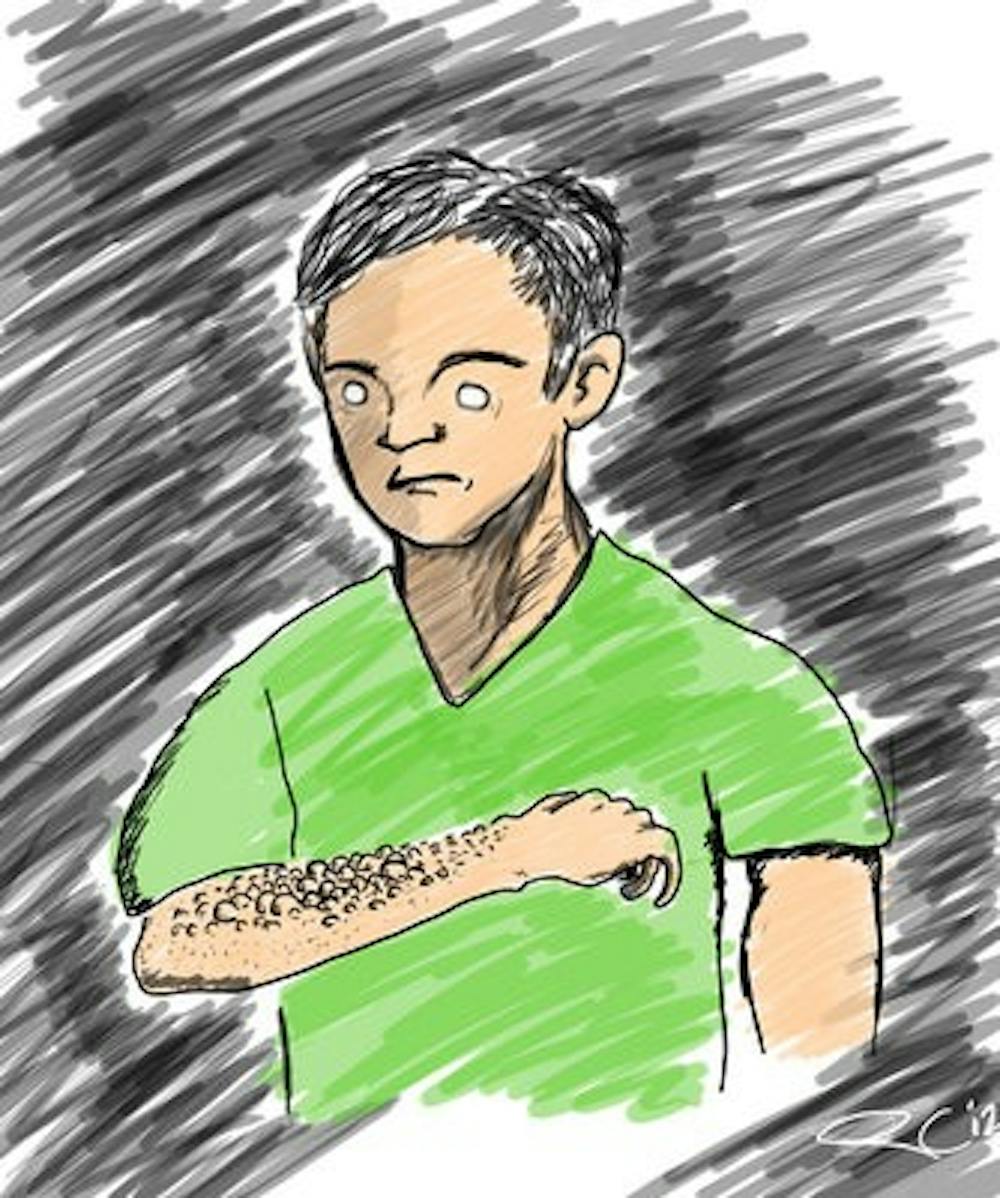Goosebumps are a common occurrence for animals and humans, appearing when someone is emotionally charged or cold. But according to Robert Lishak, associate professor of biological sciences, goosebumps do nothing beneficial for humans.
"For us humans, goosebumps have no adaptive, physiological reason," he said.
Yet the army of bumps that can form along the back, around the neck and down the arms and legs are still present in day-to-day life.
"I went in my house last week and my roommate wasn't home," said Rosson Anderson, senior in business administration. "I could have sworn I heard the back door close, and chills went all the way down my back. I looked at my arms and I had goosebumps."
Lishak said experiences like Anderson's are explained by the muscles at the base of hairs.
"If you've ever had the spine-tingling chill running up and down your back when you're really scared, those are all the arrector pili muscles standing straight up," Lishak said. "When they stand up they cause that tickle in your skin that you perceive as that spine-tingling chill."
Lishak said animals respond to fear just as humans do, but they benefit from goosebumps in a way humans don't.
"If an animal is frightened it's going to get goosebumps, and it's going to accomplish two things by doing so," he said. "First, it's going to make itself look bigger, and if it can increase the size of its silhouette, it might even win the fight without having to fight at all because the other animal could get so frightened it runs away."
But should its attacker not flee, Lishak said the animal still has a chance to live, thanks to goosebumps.
"Goosebumps are in certain parts of your body--like around the rough of your neck, along your back--and these are vulnerable parts of your body where the blood vessels are close to the surface," Lishak said. "So if you're a furry mammal and you get goosebumps, you'll stick the fur up, the other animal will try to claw or bite you and they'll get is a mouthful or a fistful of hair and they won't get to where the sensitive vessels are."
Laura Howard, senior in communication disorders, said she experiences goosebumps every Monday, Wednesday and Friday--but not out of fear.
"My class in Haley is incredibly cold," she said. "Even with a jacket, I'm bound to be covered in goosebumps when I step through that door, 'It's something I've just come to expect."
Lishak said goosebumps serve no purpose to humans when they are cold, but can be life-saving for animals.
"When (animals) get goosebumps, the hair stands up and increases the amount of dead air space among the hairs and increases insulation so the animal doesn't lose heat," he said. "We just don't have enough close-together hair to call fur, but for furry mammals it's very important, and they would not survive if they didn't have goosebumps."
Howard said they are simply annoying.
"I could have just shaven that day, and my legs will be silky smooth," Howard said. "But then I get to class and 'BAM,' now I have to go home and shave again all because of them --first-world pains."
Do you like this story? The Plainsman doesn't accept money from tuition or student fees, and we don't charge a subscription fee. But you can donate to support The Plainsman.




